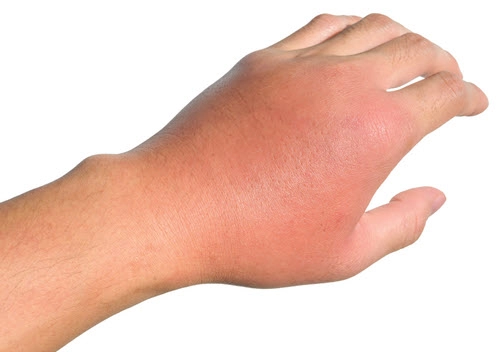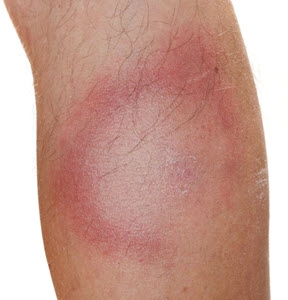Will You Get Bugged Coding These Insect Bite Encounters?
Get ready for the warm weather with these summertime scenarios. When an insect bites or stings a child, chances are the effects will either be so mild that the child won’t need to visit your office, or so severe that an immediate visit to the emergency department (ED) is in order. But that doesn’t mean you can ignore coding associated with insect stings and bites, as there will be times when they will create scenarios that your pediatrician will have to address. Here are two of them for you to practice on and get your insect bite coding up to speed in time for the summer season. Scenario 1: Get the Itch to Code this Cellulitis Situation Correctly An established 6-year-old male patient presents with a slight fever and a red, blistered area on the back of his right hand. There is pus discharging from two infected mosquito bites, which the boy has been scratching for a few days. The pediatrician diagnoses the boy with cellulitis due to scratching and infecting the mosquito bites. Using a small-gauge needle, the pediatrician opens the blistered area and drains serous fluid from it, then applies a sterile dressing to the wound. The pediatrician counsels the boy’s parent on how to keep the wound clean and prescribes an antibiotic ointment. For the procedure: You’ll use 10060 (Incision and drainage of abscess [eg, carbuncle, suppurative hidradenitis, cutaneous or subcutaneous abscess, cyst, furuncle, or paronychia]; simple or single) for the incision and drainage (I&D). And, as the pediatrician has performed a separate evaluation and management (E/M) service by diagnosing the cellulitis, treating it, and prescribing antibiotics to manage the condition, you’ll assign an office/outpatient E/M service such as 99212 (Office or other outpatient visit for the evaluation and management of an established patient, which requires a medically appropriate history and/or examination and straightforward medical decision making …), attaching modifier 25 (Significant, separately identifiable evaluation and management service by the same physician or other qualified health care professional on the same day of the procedure or other service) to the E/M for the significant, separately identifiable E/M the pediatrician performed in addition to the I&D. For the diagnosis: To code the condition associated with the bite, the ICD-10 Alphabetic index directs you to Cellulitis, upper limb to code the condition when it occurs in the hand. And, as you know the infection is in the right hand, you’ll use L03.113 (Cellulitis of right upper limb). Second, as mosquito bites led to the cellulitis, you can add a secondary diagnosis. For a nonvenomous insect bite, you’ll use W57.XXX- (Bitten or stung by nonvenomous insect and other nonvenomous arthropods), remembering to “add a seventh digit: A [Initial encounter], D [Subsequent encounter], and S [Sequela], based on the episode of care,” advises Chelle Johnson, CPMA, CPC, CPCO, CPPM, CEMC, AAPC Fellow, billing/credentialing/auditing/ coding coordinator at County of Stanislaus Health Services Agency in Modesto, California. As this is the first time the patient has been treated for the condition, that would lead you to W57.XXXA. Scenario 2: Score a Coding Bull’s-Eye In This Tick Bite Encounter An established 10-year-old female patient reports to your provider complaining of a fever, chills, and a headache a week after returning from a family camping trip in Maine. During an exam, your pediatrician finds a rash shaped like a bull’s-eye on the patient’s right calf. Your provider removes a tick from the center of the rash using tweezers, and suspects the patient has Lyme disease. The provider orders an antibody test to rule the disease in or out. How would you code this encounter? For the procedure: Coding here is determined by the method your pediatrician used to remove the tick. If the provider uses tweezers, you cannot use a foreign body removal (FBR) code because codes such as 10120 (Incision and removal of foreign body, subcutaneous tissues; simple) or 10121 (… complicated) describe removals where the provider makes an incision in the patient’s skin to remove the foreign body, which is not what happened in this encounter. Instead, “as the provider simply grasped the tick and removed it without any incision, then I would recommend reporting only an E/M code,” says JoAnne M. Wolf, RHIT, CPC, CEMC, AAPC Fellow, coding manager at Children’s Health Network in Minneapolis. Given that the tick removal represents one self-limited or minor problem, the risk of morbidity from the removal is minimal, and the provider has ordered a unique test, you would once again report 99212. For the diagnosis: Though the patient’s symptoms, and your provider’s suspicions, point toward the patient having Lyme disease, at this stage you cannot code for the condition as the diagnosis has not yet been established. However, you can go ahead and code the signs and symptoms the patient is currently exhibiting. So, you’ll document R51.9 (Headache, unspecified); R50.9 (Fever, unspecified), which incorporates the patient’s chills; and R21 (Rash and other nonspecific skin eruption) for the bull’s-eye rash. When the antibody test does come back positive, you can use A69.2- (Lyme disease) for a definitive diagnosis, adding a 5th character depending on any health complications caused by the condition, such as A69.21 (Meningitis due to Lyme disease). Also, whether you use a sign and symptom code or a definitive diagnosis code, you will again use W57.XXXA to document that this is the patient’s initial encounter with your provider to seek treatment for the condition.





